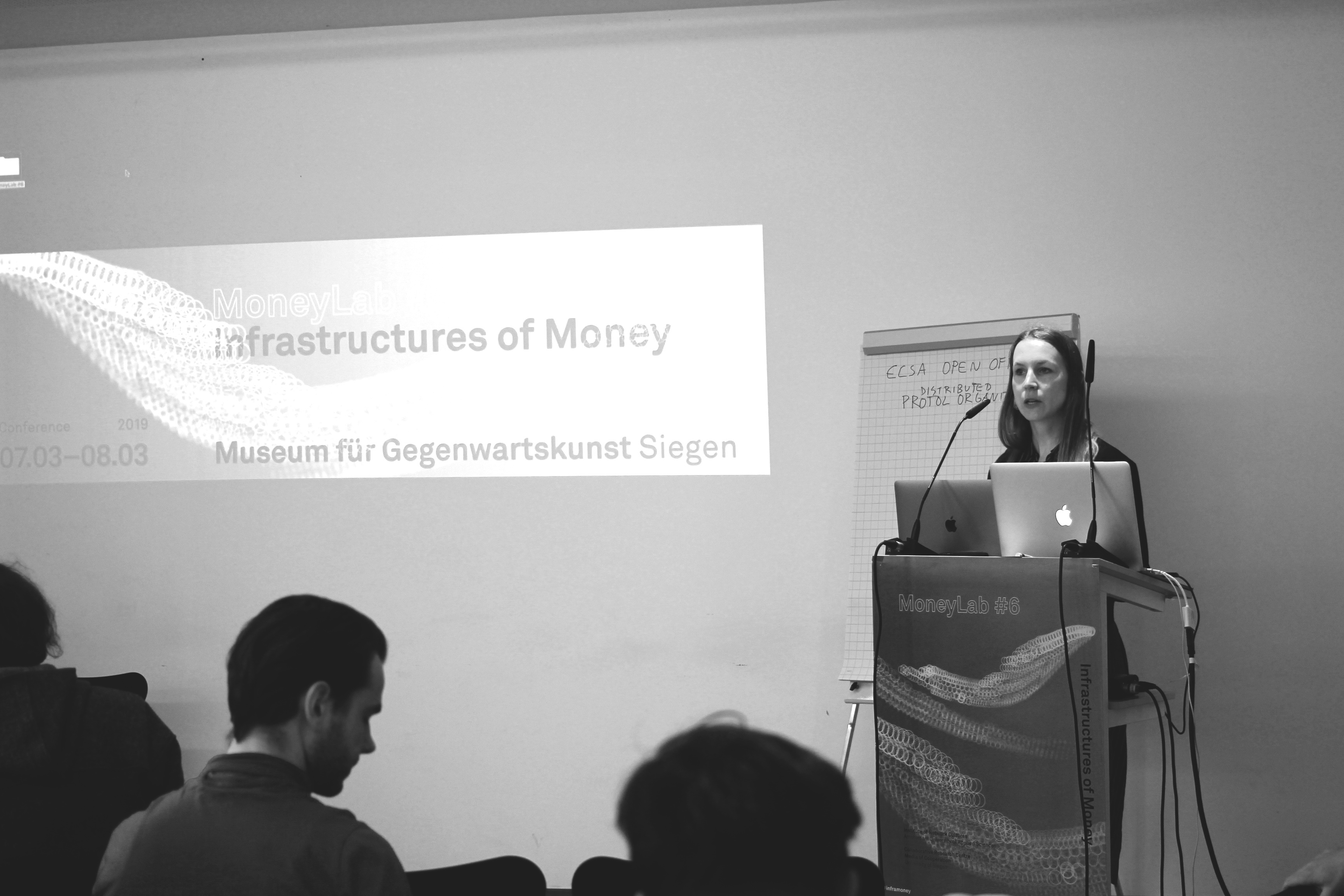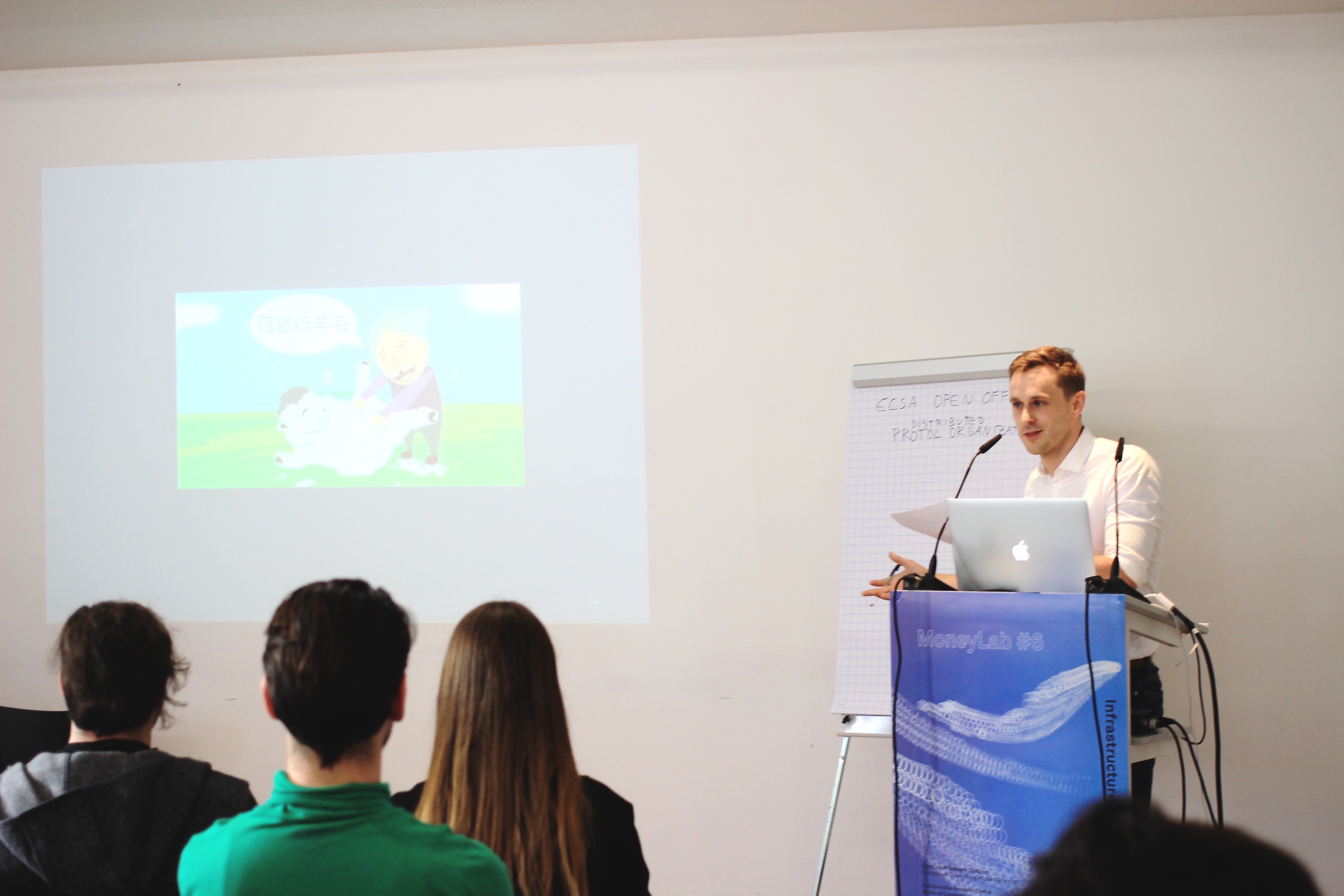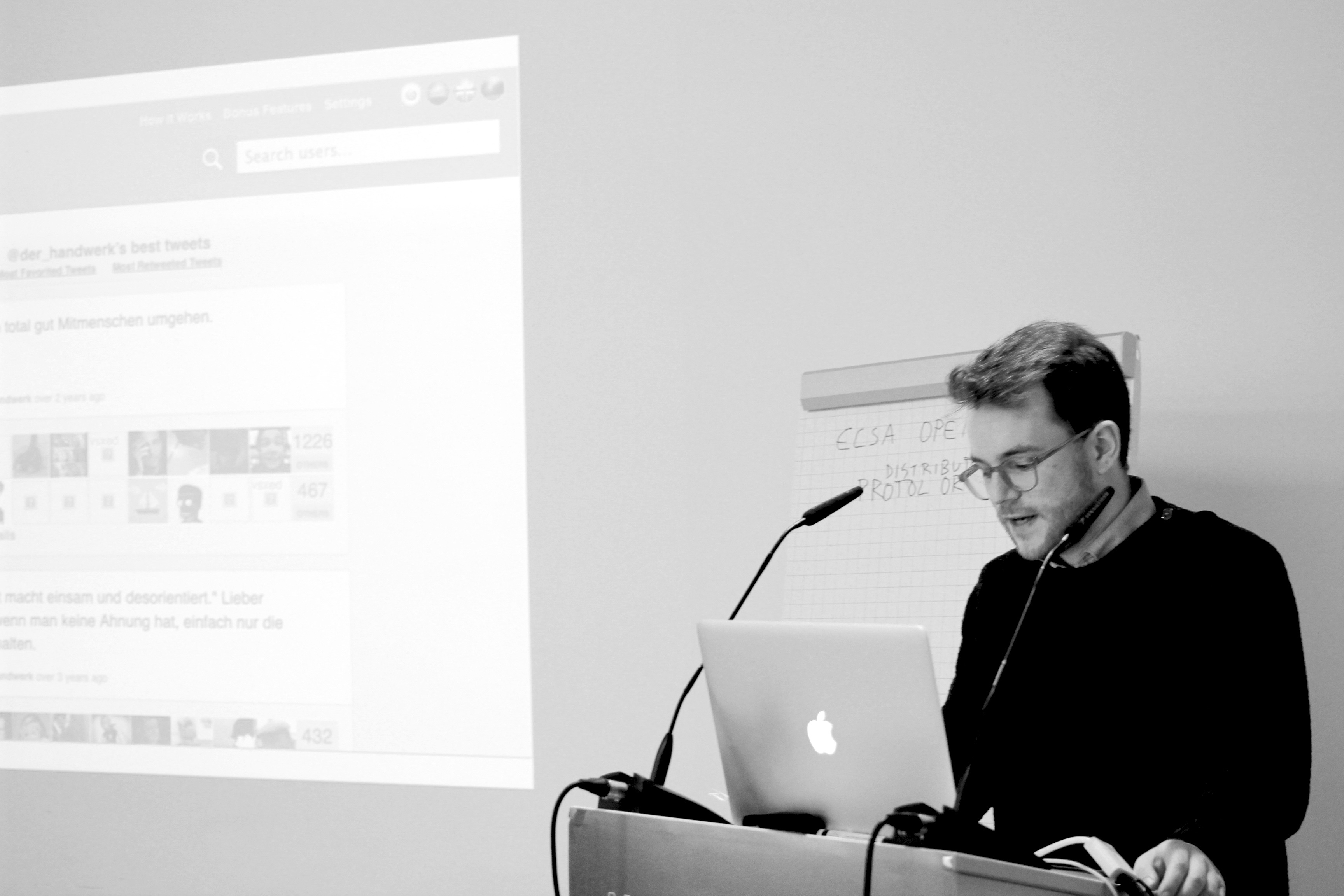Written by Marvin Landwehr
Moderating the closing session „Monetizing the social – socializing money“ co-organizer Carolin Gerlitz closed the arch of MoneyLab#6 by picking up questions from the opening session of how the social is being monetized. She made us keen for the coming presentations including, the advent of new intermediaries, the relative centrality of platforms as well as their new metrics, all in the bigger context of designing the social grammars and reorganizing labor.

First Nathaniel Tkacz spoke about „designerly banking and the securitization of experience.“
Nate Tkacz is an assistant professor at the Center for Interdisciplinary Methodologies at the University of Warwick. He not only entertained us with the self-proclaimed first and second shittiest images of the conference, but also took us back to the year 1996, from where we started our journey on hilarious visions of mobile banking. We learned how money became appified through user design, until the reasons to laugh vanished upon reflecting on the business models of especially the challenger banking startups: Nate gave us an overview on the permissions of the most prevalent online banking apps–highly questionable, why they should be technically necessary–and the picture did not improve, when we took into account the practice of third party trackers or why banking applications connect to your facebook profile. He painted a dark picture of established securitization practices being circumvented and replaced by data mining the users, resulting in strange interpretations of Know-Your-Customer (KYC). When the relevant question is not ‘is this what users desire?’ but instead ‘Do we get venture capital for this?’, the result is sometimes funny but unfortunately more often scary. The convenience of mobile banking and intuitive user interfaces distract us from questioning the motives behind the neat applications and even worse so, they normalize an extravagant self-exposure of personal data.
Tom McDonald vividly taught us the Chinese meaning of „pulling sheep’s wool“.
Tom McDonald, who is an assistant professor for sociology at the University of Hong Kong, delighted us with „digital money, online thriftiness and organizational misbehavior in a Chinese factory“.

It is 12 am at a magnetic fastener factory in China. Every movement is optimized in the worker’s precious short break. It ends with the forbidden but tolerated use of the factories Wi-Fi to collect daily discount tokens in various applications. In China this practice of cleverly earning tiny rewards is called ‘pulling sheeps wool’ and can take different forms such as scrolling through newspaper articles, playing online games, or simply logging into applications. All these attempts to bind the user to the platform are presented by the application providers and accepted by the workers as „Easily earned money“. Paradoxically, in their scarce free time, the workers regard this as a worthwhile activity. Speaking of seemingly paradox behavior, sociological studies show, that thrift does not only occur to compensate for an economical lack, but also takes forms of shopping for the experience of saving money. This insight presents thrift as a psychological and not as an economic phenomenon.
To me Tom’s empirical study memorably shows how even the last free time of Chinese workers can easily be consumed by the incentive systems these applications generate. The tiniest monetary amounts are sufficient to cause significant behavioural alternations.
With Johannes Paßmann we took a detour into Twitter as practices of „mundane valuation: co-creating objects, subjects and objects in social media.”
A shorter journey to the Moneylab#6 had Johannes Paßmann, who is a research associate in media science, here, at the University of Siegen. Where many media scientists focus their research solely on the subjects in a social network, he does not stop here and takes a closer look at how social media platforms create objects, such as, likes. It turned out to be anything but prosaic to reflect on likes as a form of self-definition. Johannes summed it up on a slide with Andreas Reckewitz: “I am my likes, that means, I am composed of the things I like”. To illustrate the learning process to become a social media user he used the example of the learning process to become a marijuana consumer. You need to learn to be able to enjoy the consumption. The parallels became evident, as one criterion for a high quality post in meme culture is that it is not understandable by an outsider. We took a dive into the community of twitters favstar.fm (a service that was shut down 2018 and used to rank twitter posts). In the fight for the objects of likes, retweets and followers, the community created authorities to amplify tweets. Typical activities of the community members included observing your tweets grow, reading other user’s successful tweets in order to copy their style, as well as thinking about the meaning of these platform units. This showed how these objects can become units of value in the humorously economic language of this twitter subculture – a quite self-ironic form of monetizing the social. Third parties even tried to turn these objects into actual tradeable monetary value via tokenization- but all of them failed.

The last presentation was by Crystal Abidin: „Influencers and the Commodification of Everyday Life: Brief Histories from Blogshops, Instagram, and tumblr.“
Crystal Abidin, Senior Research Fellow at Curtin University in Perth (Australia), gave us an insight behind the scenes of Asian influencers and crystallized (I am sorry…) her experience into seven key observations.
1) The people, whose pictures became popular memes, in some cases tried to personify the meme as a persona while in other cases they unwillingly became internet celebrities. 2) There are four main specializations of influencers: exclusivity, everydayness, exceptionalism, exoticism. 3) The most successful internet celebrities then become influencers. 4) influencers rely on both anchor content, the main reason they are followed, and filler content, that also serves to uphold the image of an everyday life. 5) The close connection to advertising often takes the form of blogshops, where the followers have the feeling of a good friend recommending them the products. 6) Instagram influencers are optimizing their online behavior with regards to the constantly changing algorithms that Instagram uses, to enlarge their reach. One form this takes is the witching hour of activities in the middle of the night. 7) The phenomenon of so called Astroturf, where commercial advertising is trying to present itself as a grassroots movement. Therefore actions are coordinated outside the platform in order to appear as unrelated organic behavior in the online world.
Crystal impressively illustrated the perversions in the commodification of everyday life, where great efforts are taken to preserve a natural human appearance.


